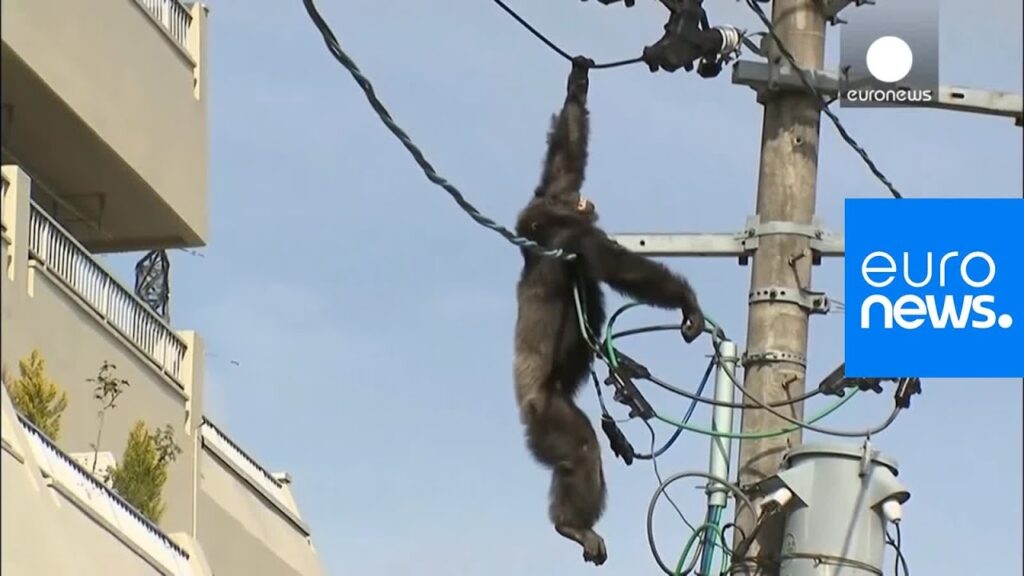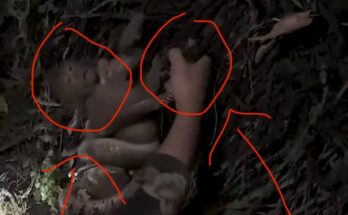
To passersby, the sight was both astonishing and terrifying. The chimpanzee dangled from cables as though they were branches in the forest, using his natural agility to balance and swing. But unlike the safety of trees, these wires carried high-voltage electricity. Every movement brought the risk of electrocution, and witnesses could only watch in horror as the animal edged closer to danger.
Moments later, tragedy struck. The chimp lost his grip—or perhaps the shock of the current weakened him—and he fell from the pole. Gasps and screams filled the air as the animal hit the ground. While some reports suggest he survived the fall and was later tranquilized by authorities, others describe the incident as fatal. Either way, the escape ended in a heartbreaking reminder of how far captive primates will go in search of freedom.
This event raises urgent questions. Why do such escapes keep happening? Experts point to the combination of intelligence and frustration in captive primates. Chimpanzees are highly social animals that thrive in complex groups and wide-ranging territories. In captivity, especially when conditions are inadequate, stress and restlessness build up. An escape attempt is not just an act of defiance—it is a cry for freedom.
But once outside, the dangers multiply. Unlike their natural forest habitats, human landscapes are filled with hazards—roads, wires, poles, and crowds. A chimp on the loose may panic, behave unpredictably, and face deadly risks like the one seen on the electricity pole. For residents and officials, such situations are equally dangerous. A frightened adult chimpanzee is incredibly strong and can harm people if cornered.
Animal welfare groups argue that these tragic escapes highlight the need for stricter regulations on keeping primates in captivity. They emphasize that without enriched enclosures, proper care, and respect for natural behavior, incidents like this are inevitable. Some even call for an end to private ownership of great apes altogether, stressing that these animals belong in the wild, not behind bars.
For the public, the viral video of the chimp clinging to live wires was a mixture of awe and sorrow. It showed both the animal’s resilience and his vulnerability. The image of a creature designed for forests forced to navigate power lines is a stark symbol of how human progress often comes at the expense of other species.
In the end, the chimp’s story is less about escape and more about survival. It is a warning that unless humans find better ways to coexist with primates—through conservation, sanctuary programs, and responsible laws—more tragic encounters will unfold. The electricity pole may have been his path to freedom, but it was also a reminder that the world outside captivity can be just as unforgiving.


